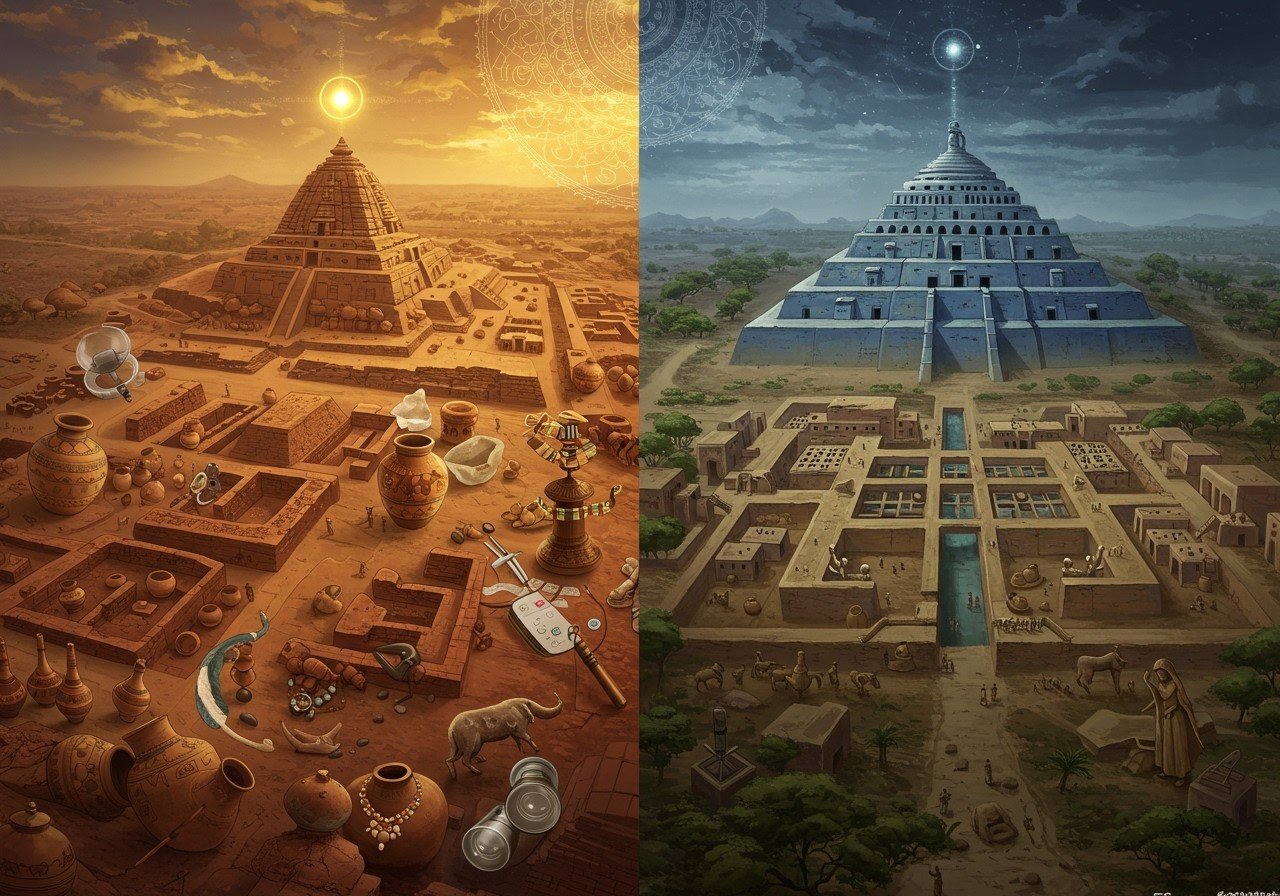
The Indus Valley Civilization (also known as the Harappan Civilization), a cradle of ancient urban life, flourished in the Indian subcontinent from approximately 3300-1300 BCE. Among its many archaeological treasures, Rakhigarhi and Mohenjo-daro stand out as significant centers of this civilization. This analysis delves into their unique characteristics, comparing their size, historical importance, and cultural contributions to unveil the rich tapestry of India’s past.
Historical Significance
Both Rakhigarhi and Mohenjo-daro offer invaluable glimpses into the Indus Valley Civilization. Excavations, beginning in the early 20th century, have unearthed a wealth of information about urban planning, social structures, and daily life during this era. These sites have revealed intricate city layouts, advanced drainage systems, and evidence of thriving trade networks. Artifacts, tools, and inscriptions discovered within these cities continue to provide insights into the governance, economic activities, and cultural practices of the Indus people.
Location and Size
Rakhigarhi, situated in Haryana, India, and Mohenjo-daro, located in Sindh, Pakistan, held strategic positions along ancient trade routes. Rakhigarhi, encompassing approximately 550 hectares, surpasses Mohenjo-daro in size, which covers around 300 hectares. This difference in scale likely influenced population density, urban design, and resource management within each city.
Urban Planning and Architecture
Both cities showcase impressive urban planning, featuring grid patterns, sophisticated drainage systems, and public baths. Mohenjo-daro is renowned for its Great Bath, a remarkable example of ancient engineering. Rakhigarhi, on the other hand, boasts unique mounds and distinctive architectural features. Variations in building materials and construction techniques between the two cities reflect the diverse technological advancements within the Indus Valley Civilization.
Socio-Economic Dynamics
Archaeological evidence from both Rakhigarhi and Mohenjo-daro reveals thriving trade networks, craft production, and agricultural practices. Artifacts such as seals, pottery, and tools point to a complex economic system. Residential areas and public spaces suggest social hierarchies and organized governance. These findings contribute to our understanding of the socio-economic dynamics that shaped this ancient civilization.
Cultural Contributions
Artistic and religious artifacts, including terracotta figurines, jewelry, and ceremonial objects, have been discovered at both sites. These items shed light on the spiritual beliefs and cultural practices of the Indus people. Burial sites, ritual spaces, and iconography reveal both commonalities and differences in the cultural expressions of Rakhigarhi and Mohenjo-daro.
Preservation Efforts
Preserving these invaluable sites presents ongoing challenges due to environmental factors, urbanization, and looting. Government bodies and international organizations play a crucial role in funding and supporting archaeological research and conservation initiatives. Raising public awareness and promoting education about the importance of these sites are essential for their long-term protection.
Conclusion
Rakhigarhi and Mohenjo-daro stand as powerful reminders of the ingenuity and complexity of the Indus Valley Civilization. By comparing these two urban centers, we gain valuable insights into the lives and achievements of our ancestors. Their sophisticated urban planning, thriving economies, and rich cultural traditions continue to inspire awe and wonder. Preserving these sites is paramount to safeguarding our shared human heritage.
Connecting with Ancient Heritage Through Poojn.in
At Poojn.in, we bridge the gap between India’s rich past and the present, offering devotees access to authentic cultural and religious items. As you explore the wonders of Rakhigarhi and Mohenjo-daro, enhance your connection to this ancient heritage with our curated selection:
- Radha Krishna Bigraha (14-inch): This exquisitely crafted marble dust sculpture embodies divine love and devotion, echoing the artistic traditions of the Indus Valley Civilization. Bring the blessings of Radha Krishna into your home with this beautiful murti.
- Original Athizay Stone Shiva Lingam and Nandi Set: Honor Lord Shiva with this authentic stone Shiva Lingam and Nandi set. Crafted from natural stone, this set connects you to ancient spiritual practices and symbolizes devotion and reverence. Perfect for your personal altar or prayer space.
Explore our diverse collection of puja items, handcrafted with care and reverence, to enrich your spiritual journey. Visit poojn.in today.
FAQs
Which city is larger, Rakhigarhi or Mohenjo-daro? Rakhigarhi is the larger of the two, spanning approximately 550 hectares, while Mohenjo-daro covers around 300 hectares.
What distinguishes Rakhigarhi from Mohenjo-daro? Primarily their location; Rakhigarhi is in Haryana, India, while Mohenjo-daro is in Sindh, Pakistan. Both belonged to the Indus Valley Civilization but existed in different geographical regions.
What key discoveries were made at Rakhigarhi? Significant finds include burial sites, pottery, tools, and evidence of a well-planned city with roads and drainage systems, offering insights into daily life and urban development.
What are the major findings at Mohenjo-daro? Discoveries include the Great Bath, large granaries, well-planned streets, seals, and jewelry, showcasing advanced engineering and craftsmanship.
Why are Rakhigarhi and Mohenjo-daro important? These sites provide essential insights into the urban planning, social structure, and daily life of the Indus Valley Civilization, enriching our understanding of ancient history.
How old are Rakhigarhi and Mohenjo-daro? Both cities date back to approximately 2600-1900 BCE, representing a crucial period in the development of urban civilization.
Are these cities UNESCO World Heritage Sites? Mohenjo-daro is a designated UNESCO World Heritage Site. Rakhigarhi has been proposed but is not yet listed.
What threats do these sites face? Urbanization, climate change, and looting pose significant threats to the preservation of Rakhigarhi and Mohenjo-daro, highlighting the importance of ongoing conservation efforts.
Explore more about Nira River, Shri Swaminarayan Mandir Mumbai, Varanasi’s Leaning Temples, and Varanasi’s Sacred Sites on poojn.in.


